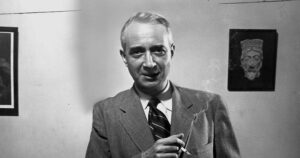The BEST: Beyond Culture

Summary: Beyond Culture: Essays on Literature and Learning (1965) is a collection of Lionel Trilling’s essays on a variety of subjects. Trilling presents a consistent argument throughout the collection’s eight chapters: “The examination of life by aesthetic categories yields judgments of a subtle and profound kind, of compelling force” which liberates great authors and their readers, because they had the “clear purpose of detaching the reader from the habits of thought and feeling that the larger culture imposes, of giving him a ground and vantage point from which to judge and condemn, and perhaps revise, the culture which produced him.” Cautioned by the left’s flirtation with, or outright seduction by, communism in the first part of the century, Trilling’s wiser-for-the-experience liberalism as presented in Beyond Culture provides marvelously capable tools in reorienting identification with a strong and stable liberal tradition.
Why this is The BEST: Though the social and political pendulum swings of mid-20th century America, Lionel Trilling seemed to believe the liberalism he modeled and taught in perpetual ascendancy. New Deal political liberalism and academic liberal social criticism peaked during his lifetime; America’s flirtation, and even that of traditional Judaism, with conservatism, which became a full-blown affair by the turn of the century, still lurked deep in the shadows at the time of Trilling’s death in 1975. His influence on major thinkers and writers of the American Jewish intellectual scene, from Cynthia Ozick to Carolyn Heilbrun to Louis Menand, weighted heavily toward the center, as equidistant from the radical left of the 1930s as from the neo-conservatism of the Reagan years.
Beyond Culture picked up threads of liberal culture and literary criticism begun in a still earlier volume, The Liberal Imagination (1950). Freud and Isaac Babel are essay topics, as are classics such as Jane Austen’s Emma and Nathaniel Hawthorne. Trilling cites Henry Sidgwick in the last essay, advocating for supplanting the Greek and Latin classics with “really” teaching students English so that “as far as possible, they may learn to enjoy intelligently poetry and eloquence; that their interest in history may be awakened, stimulated, and guided; that their views and sympathies may be enlarged and expanded by apprehending noble, subtle, and profound thoughts, refined and lofty feelings: that some comprehension of the various development of human nature may ever abide with them, the source and essence of a truly humanizing culture.”
R. Jonathan Sacks’ humanism built on Trilling’s vision in what seems a profoundly authentic Jewish way: not to supplant the classics of the Jewish canon but to refract their teachings and values through a humanizing lens. It is no wonder that with this perspective guiding his public voice, Sacks’ Torah lands as influentially with Jews of many views and alliances as with non-Jews. Trilling’s lectures undergird some of Sacks’ most captivating themes throughout his writing. Sacks’ call to move from “I” to “we” suggests shifting a balance in the tension that the enlightenment wrought, to free the individual from corporate (then ecclesiastical, now national) identity toward greater autonomy. That struggle’s expression in Trilling’s essay “Society and Authenticity” is the “honest soul” that relates to society in both “obedient service” and “inner reverence.” Trilling’s sustained argument for the reflective, literate, thoughtful, and above all authentic self is the humanist compliment of Sacks’ moral ideal.
Joe Kanofsky is the Rabbi of Kehillat Shaarei Torah in Toronto and holds a Ph.D. in Literature.
Click here to read about “The BEST” and to see the index of all columns in this series.

